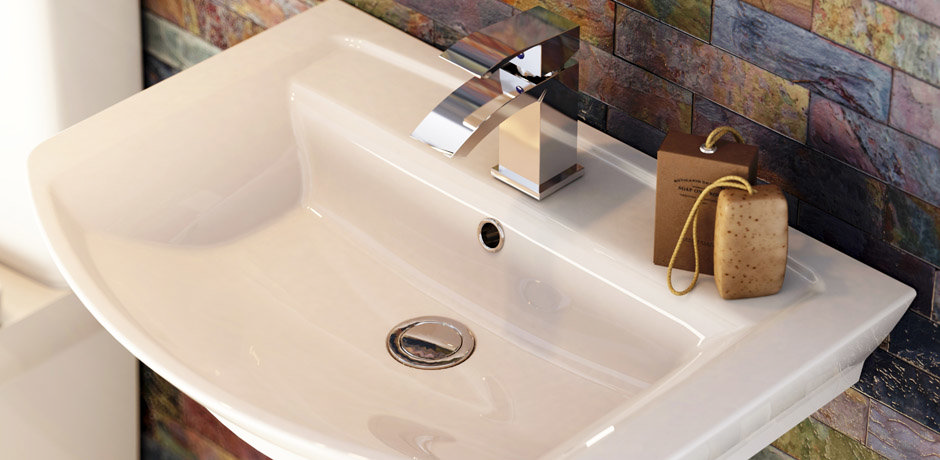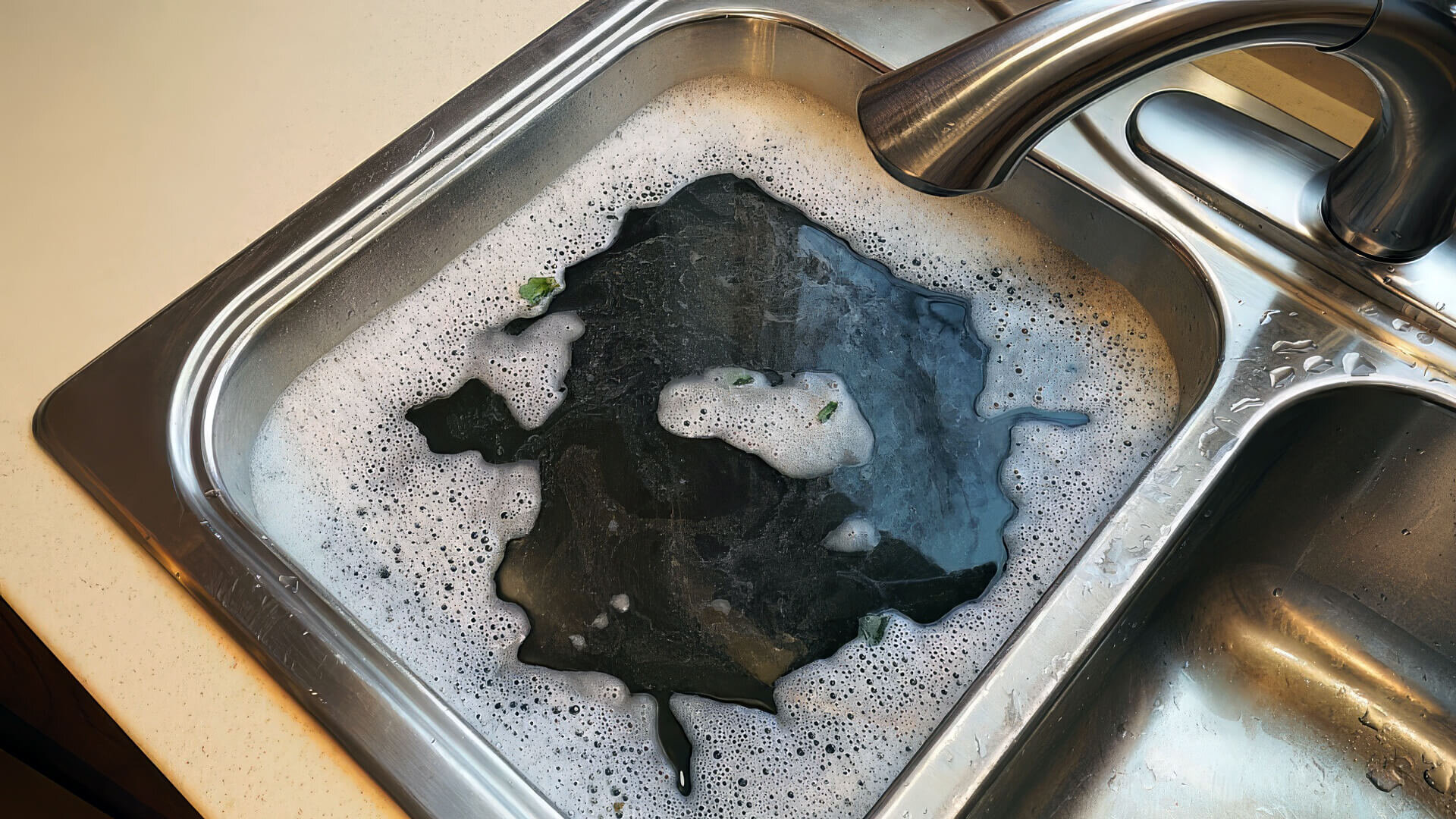Practical Ways To Fix Slow-Draining Sink Problems
Practical Ways To Fix Slow-Draining Sink Problems
Blog Article
We have unearthed this great article pertaining to Solved! How to Fix a Slow Sink Drain down the page on the internet and accepted it made good sense to share it with you in this article.

Introduction
We have actually all been there: You're cleaning your teeth or washing your hands, and you observe the water pooling in the sink. As opposed to promptly swirling down the tubes, it sticks around, transforming your once-refreshing morning regimen into a miniature swamp scene. A slow-draining sink isn't just irritating; it's often a sign of larger plumbing problems lurking underneath the surface area. Fortunately is that the majority of slow-draining sinks can be repaired with a little knowledge, a couple of basic devices, and some patience. Prepared to tackle this job head-on? Let's roll up our sleeves and dive right in.
Comprehending the Sources Of a Slow-Draining Sink
Before you begin poking around in your pipelines, it helps to know what could be creating the stagnation. Recognizing the origin makes it less complicated to select the best fix.
Devices and Materials You'll Need
The right devices make all the difference. Fortunately, you won't require a fully stocked plumbing technician's van to get the job done.
Step-by-Step Guide to Dealing With a Slow-Draining Sink
Currently, let's enter into the nitty-gritty. This step-by-step procedure will certainly guide you via easy techniques to recover your sink's drain.
Step 1: Get Rid Of and Clean the Stopper
Frequently, the stopper (that tiny plug you lower to block water) is the initial offender. Remove it meticulously and wipe any hair or gunk caught around its base. Rinse it completely before putting it back in position.
Action 2: Utilize a Plunger to Dislodge Particles
Got that plunger ready? Setting it over the drain and offer it a couple of firm pumps. The concept is to develop suction that can loosen any type of blockage. If you see bits of particles drifting up, you're on the best track.
Action 3: Try a Drainpipe Snake or Wire Hanger
If the plunger doesn't work, it's time to draw out the drain snake. Gently feed it into the drainpipe and twist as you go. You might really feel some resistance-- that's likely the obstruction. Keep turning and drawing up until you get rid of the obstruction. If you do not have a drain serpent, a straightened cable hanger can work in a pinch.
Tip 4: Apply a DIY Drainpipe Cleaner
An all-natural cleaner made from baking soda and vinegar can break down recurring crud. Put half a mug of cooking soft drink right into the drainpipe, complied with by half a cup of vinegar. Allow it fizz for about 15 mins, after that flush with hot water. This chain reaction frequently does marvels for small blockages.
Tip 5: Rebuild and Check the Sink
Placed whatever back with each other and run the faucet. Does the water now swirl down the tubes at a decent speed? If yes, offer yourself a pat on the back. Otherwise, don't misery-- there are still a few even more tricks up your sleeve.
Necessary Tools for Do It Yourself Repairs
A plunger is your go-to beginning point. A tiny, sink-sized plunger produces suction that can displace minor blockages. For even more relentless obstructions, a drain serpent (occasionally called a plumbing technician's auger) functions wonders. A set of gloves, a flashlight, and perhaps a set of safety goggles are also helpful.
Advised Cleaning Solutions
Mild recipe soap and hot water can assist break down oily build-up. A mix of cooking soft drink and vinegar is a tried and true home remedy, and enzymatic cleaners supply an even more environment-friendly strategy. Maintain chemical drain cleaners as a last option, as they can be extreme on your pipelines.
Usual Offenders Behind Slow Drainage
So, what's clogging things up? Commonly, it's a mixture of day-to-day debris-- assume hair, soap scum, toothpaste deposit, and remaining food bits. Over time, these little bits build up and hold on to the pipe wall surfaces, progressively narrowing the flow and making it harder for water to pass through. In some cases, mineral deposits from difficult water can likewise include in the gunk, creating the best tornado for stubborn clogs.
When is it Time to Act?
If you observe the water draining pipes slower than normal, it's a good concept to interfere earlier rather than later on. Waiting as well long could cause finish blockages, undesirable smells, or perhaps pipe damage. If the water takes greater than a few secs to remove after turning off the faucet, consider it a red flag and prepare to place on your DIY hat.
Security First: Preventative Measures and Prep work
Prior to you launch into unclogging setting, think of safety and security. You're taking care of possibly unclean water and particles, so slip on a pair of gloves. If you're using chemical cleansers, ensure the area is well-ventilated and comply with the directions on the tag.
Safety Gear and Office Setup
Put down some old towels or dustcloths around the sink area to capture sprinkles. Remove any kind of items that could enter your method, like soap dispensers or toothbrush owners. Ensure you have excellent illumination-- grab a flashlight if needed.
Different Techniques for Stubborn Clogs
Not all obstructions are created equivalent. If your sink still rejects to work together, take into consideration these different services.
Sodium Bicarbonate and Vinegar Approach
We already touched on this, however it deserves noting once again. This mild, environmentally friendly technique is more secure than chemical cleansers and usually quite reliable.
Chemical Drainpipe Cleaners
Enzyme-based cleansers make use of all-natural germs to digest raw material. They're a superb selection if you're aiming to prevent extreme chemicals. Simply bear in mind, they may take a bit longer to function their magic.
Chemical Drain Cleaning Company: Advantages And Disadvantages
Chemical cleaners can blast with tough clogs quickly, however they're not without drawbacks. They can produce heat and fumes, damage pipes if utilized exceedingly, and position ecological dangers. Utilize them sparingly, and always adhere to the directions meticulously.
Preventive Measures to Maintain Your Sink Flowing
Prevention is the most effective treatment. By adopting a couple of straightforward practices, you can maintain your sink from reducing to begin with.
Routine Cleansing Behaviors
Clean down the sink basin and component area routinely. Get rid of hair or food particles before they have a chance to wash down the drain.
Staying Clear Of Dangerous Compounds Away
Think twice prior to dumping coffee premises, oil, or coarse vegetable scraps down the sink. These culprits cling to pipeline wall surfaces, producing blockages in time.
Routine Upkeep Checks
Arrange a quick month-to-month examination. Run warm water through the sink for a couple of minutes, taking note of the circulation. If it seems slow-moving, act quick prior to it ends up being a full-on blockage.
When to Call a Professional Plumber
Often, no matter how difficult you attempt, that clog simply will not move. That's when it's time to bring in the pros.
Signs That Show an Extra Major Concern
If your sink drains gradually despite several efforts, or if you notice water backing up in various other fixtures (like your shower or bathroom), you might have an extra severe pipes problem hiding much deeper in the system.
Stabilizing Do It Yourself Efforts with Specialist Assistance
While DIY can save you money and provide a sense of accomplishment, there's no shame in calling a specialist. A specialist plumber can assess your entire plumbing arrangement, making sure there's no underlying damage or long-term trouble that could cost you a lot more in the future.
Contrasting Expenses and Long-Term Solutions
Prior to deciding, consider the big picture. An economical, quick fix may solve the issue temporarily, however investing in an extra permanent option might conserve you cash and stress in the long run.
Considering the Costs of DIY vs. Specialist Fixes
Do it yourself fixes typically cost little more than the rate of a bettor or a bottle of baking soft drink. Expert services, on the other hand, come with a price but may protect against repetitive issues and expensive fixings later.
Investing in High Quality Fixtures and Upgrades
If your sink's design contributes to frequent obstructions, it may be worth updating to higher-quality components or altering the pipes format. Consider this an investment in your home's capability and convenience.
Final thought
A slow-draining sink can seem like a small irritation, yet it's commonly an indicator that your pipes requires a little TLC. By understanding the root causes, using the right tools and strategies, and devoting to basic preventive measures, you can keep your sink flowing freely. And when all else falls short, never ever think twice to hire a specialist-- your home's pipes is worth the investment in care and maintenance.
4 Tips to Fix a Slow Draining Sink
Removing the Pop-Up
This is a great place to start when it comes to troubleshooting a slow draining sink. If your sink has a pop-up, carefully take it out and remove debris that has built up around the tool. This will also allow you to see if there are any significant blockages in the drain that you can pull out on your own to help clear up the issue.
Use a Zip-It Tool
Like a snake for a large drain, a zip-it tool helps clear out any debris or hair from a sink drain. A tool like this can be used with a drain that pops out or not as it s thinner than most snake-like tools.
Use a Drain Cleaner
Whether making an at-home cleaner or buying a solution at the store, this is a common fix many turn to when it comes to a slow draining sink. There are several options available for purchase at local supermarkets, but for those who prefer to create their own solution, one of the most common is the following.
How to Unclog a Drain Naturally
Pour boiling water down the drain Pour cup of baking soda down the drain Pour cup of vinegar down the drain Wait 10 minutes Pour boiling water down the drain again Turn on the hot water faucet to clear out the solution Use a Plunger
As a worst-case scenario option, a plunger may be a good option for those who are still struggling to get debris out of their drain. This could be especially useful if there is a large item that you suspect may be significantly stuck down the drain.
https://www.abaileyplumbing.com/blog/2021/august/4-tips-to-fix-a-slow-draining-sink/

I recently found that blog posting on How to Fix a Slow Draining Sink when looking around the internet. Are you aware of someone else who is fascinated about the niche? Why not promote it. Thanks for taking the time to read it.
Visit Link Report this page